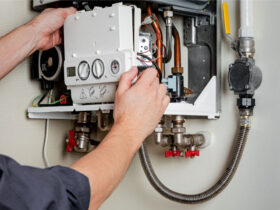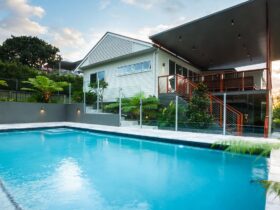Here are 20 essential tips for selecting the perfect tents supplier in Dubai event, combining structural expertise with Arabian opulence:
Structural & Technical Considerations
- Clear Span Priorities
- Opt for 15-40m spans for pillar-free grandeur
- Verify load-bearing capacity for chandeliers (min. 150kg/m²)
- Height Specifications
- Minimum 5m eave height for proper airflow
- 8-15m ridge height for dramatic effect (accounts for 30% heat rise)
- Wind Engineering
- Demand 100km/h certification for desert locations
- Require aerodynamic cross-bracing for summer shamals
- Frame Material Science
- Marine-grade 316 stainless steel for coastal events
- Anodized aluminum with T6 temper for lightweight strength
- Fabric Technology
- PTFE-coated tensile membranes for 25-year durability
- Triple-layer PVC with UV50+ protection
Luxury & Functional Elements
- Climate Control Systems
- 200 BTU/sq.ft. cooling capacity for summer events
- Zoned HVAC with silent (<55dB) operation
- Acoustic Engineering
- STC 45+ rated liners for noise reduction
- Baffled ceiling systems to control reverberation
- Lighting Integration
- DMX-controlled RGBW systems (minimum 150 lux)
- Emergency egress lighting compliant with Dubai Civil Defense
- Flooring Solutions
- Modular aluminum decking with 10kN/m² rating
- Anti-static carpets for electronics-friendly areas
- Load Distribution
- Geotextile ground stabilization for soft sand
- Spread footings with 20kN/m² bearing capacity
Operational Excellence
- Permit Compliance
- DM approval for structures >50m²
- Temporary Occupancy Certificate requirements
- Rapid Deployment
- Pre-engineered connectors for 72-hour setups
- Color-coded assembly systems
- Safety Systems
- Smoke detectors every 100m²
- Fire-rated emergency exits (min. 1.2m width)
Aesthetic Perfection
- Custom Fabrication
- CNC-cut decorative metalwork
- Laser-etched fabric panels
- Material Authenticity
- Hand-woven Sadu fabric accents
- 24k gold leaf detailing options
- Spatial Dynamics
- Golden ratio proportions (1:1.618)
- Sightline analysis for unobstructed views
Vendor Selection
- Certification Verification
- ISO 9001:2015 for quality systems
- EN 13782 for temporary structures
- Load Testing Proof
- Request third-party certification of:
- Dead load capacity
- Live load performance
- Wind tunnel testing
- Insurance Coverage
- Minimum AED 10 million liability
- Installation risk coverage
- Post-Event Support
- 24/7 structural monitoring during event
- Emergency response SLA (<30 minutes)
Pro Tip:
For royal weddings, specify dual-layer roofs with:
- Outer PVC membrane (weatherproof)
- Inner stretch chiffon (acoustic/thermal)
Would you like a comparative analysis of tensile vs. traditional frame systems for your specific event parameters? I can provide technical specifications from leading Dubai suppliers.
How about Royal Tents in terms of Clear Span Width, Eave and Ridge Heights, Bay Distance, Framework Material and Wind Load Capacity
When selecting tents supplier in KSA, understanding their structural specifications is crucial for safety, aesthetics, and functionality. Below are the key technical aspects to consider:
- Clear Span Width
- Standard Range: 5m to 40m (or more for custom royal tents).
- Recommendation:
- For grand royal events, opt for 15m+ clear span to allow unobstructed space (no internal poles).
- Smaller tents (5m–10m) work for intimate VIP lounges.
- Eave Height & Ridge Height
- Eave Height (Sidewall Height): Typically 3m to 6m (higher = more luxurious).
- Ridge Height (Peak Height): Usually 6m to 12m+ for a majestic look.
- Why It Matters:
- Taller tents allow chandeliers, hanging décor, and better airflow.
- Low eaves (below 3m) may feel cramped for royal events.
- Bay Distance (Frame Spacing)
- Standard Bay Spacing: 3m to 5m between frame supports.
- Impact on Stability:
- Wider bay spacing (5m) reduces internal poles but requires stronger framework.
- Closer spacing (3m) enhances wind resistance.
- Framework Material
- Galvanized Steel: Most common—strong, rust-resistant, and durable for Dubai’s climate.
- Aluminum: Lighter but less sturdy in high winds (better for smaller tents).
- Decorative Finishes: Gold/silver powder coating for a royal aesthetic.
- Wind Load Capacity
- Dubai’s Wind Conditions: Gusts can reach 40–60 km/h (higher in desert areas).
- Minimum Wind Resistance:
- 50–80 km/h for standard events.
- 100+ km/h for high-wind zones (beach or desert setups).
- Reinforcement Options:
- Heavy-duty anchoring (concrete weights, ground screws).
- Cross-bracing and tension straps for extra stability.
Additional Structural Considerations for Dubai:
✔ Sand & Dust Protection – Sidewalls with zip-up panels.
✔ Fire Retardancy – Ensure tents meet UAE safety standards.
✔ Modular Expansion – For combining multiple tents into a palace-like structure.
Best Choice for Royal Events in Dubai:
- Clear Span: 20m+ (for no internal columns).
- Height: 6m+ eaves, 10m+ ridge (for grandeur).
- Frame: Galvanized steel with reinforced bracing.
- Wind Rating: 80–100 km/h (with professional anchoring).




